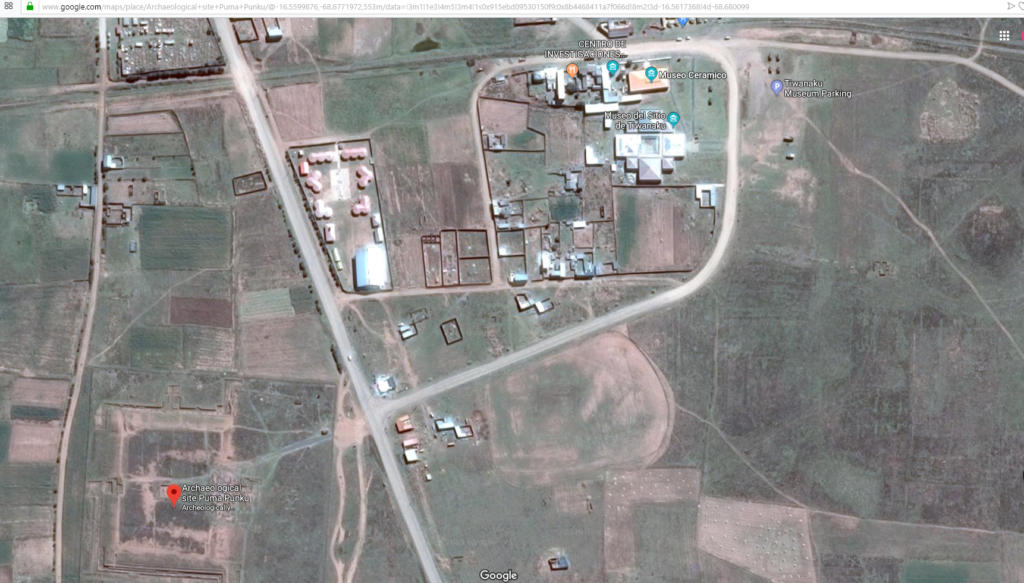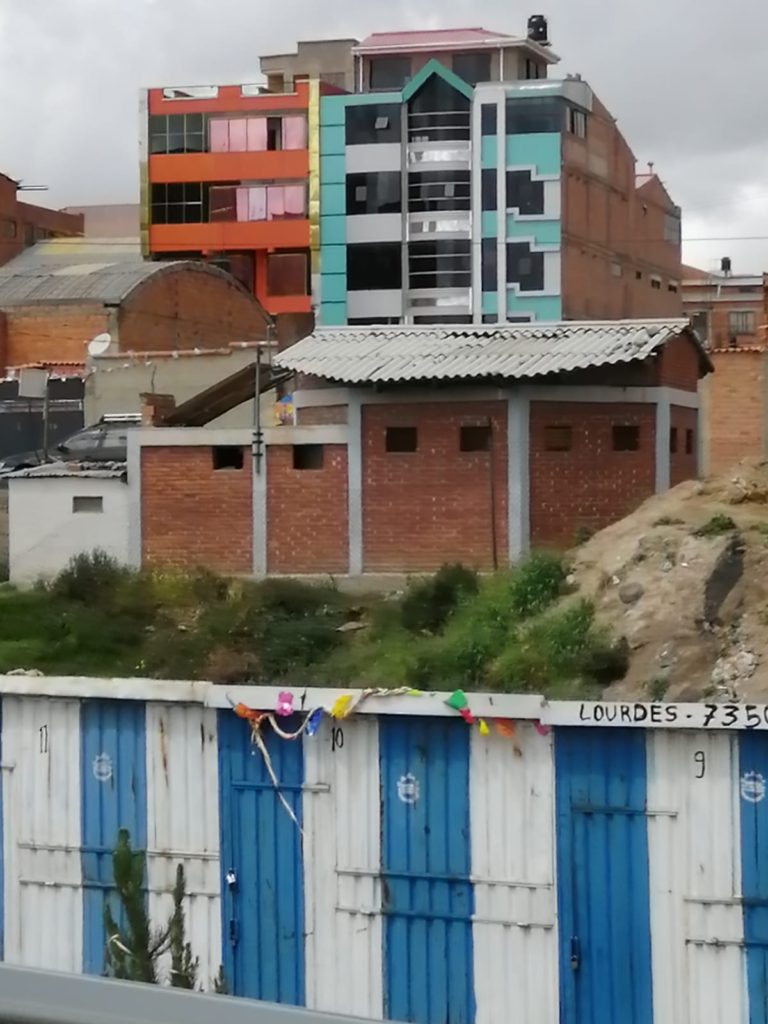And finally, Puma Punku.
As we conclude our visit to Tiwanaku, we come to yet another mystery – Puma Punku – or the Door of the Puma. Located about a kilometer from the main site, Puma Punku is distinguished by the size, complexity, and regularity of its stone forms. The site is home to the largest single block of any of the sites in the Tiwanaku complex – a piece of red sandstone 7.81 meters long, 5.17 meters wide, and an average thickness of 1.07 meters that is estimated to weigh 131 metric tons or 144 short tons. (You may see or might have seen some paranormal material claiming this stone which is part of the Plataforma Litica or stone platform weighs as much as 440 tons. This is an old and long debunked estimate. While the weight cannot be determined precisely, scientists can calculate a close estimate using its size and the specific gravity of the red sandstone that comprises it.)
As with so much associated with this culture, no record survives concerning their building tools and techniques and this lack of evidence has led some paranormalists to attribute the work to aliens. (I think this is more a reflection of Western arrogance and chauvinism toward indigenous people of the Americas. The Egyptians built the Great Pyramid of Giza some 3,000 years before Puma Punku and the Greek Parthenon antedates the Andean site by a millennium. No aliens were required for their construction.)
You might also read some claims (or hear as our local guide told us) that Puma Punku was once a port on Lake Titikaka but as a result of severe droughts the lake had receded some 10 kilometers to its present location. Not only does the construction of the site belie this possibility as this satellite image from Google Maps shows,
the claim is unsupported by the surface geography. Had this been the case, it would have put all the nearby farmland under water and made it difficult to feed the tens of thousands of people believed to be living at this site. Other issues arise regarding the geography and paleohydrology of the lake itself that also preclude the possibility but I’ll discuss those when we visit Lake Titikaka tomorrow.
Cholets of El Alto.
I first mentioned the election of Evo Morales, Bolivia’s first indigenous president in the post titled Reclamation projects and other observations and sketched his rise in Reclaiming coca – it’s the real thing – part 3. The earlier post, while not linking the two directly, also discussed the rise of the cholitas. Regardless of whether these two events are connected or not, Morales’ election has spurred a surge in indigenous pride. And that surge in pride has taken shape in El Alto in the construction of cholets.
The driving force behind the literal and figurative rise of the cholet is Freddy Mamani – a bricklayer who became a civil engineer. He began designing buildings with no formal architectural training. Coincidentally or not, he designed his first building the year Morales was first elected president.
Coalescing elements from his Aymara cultural heritage, Mamani drew inspiration from the aguayos worn by the cholitas, the chakana, Inkan ceramics and ruins, and a touch of inspiration from science fiction films. It’s a distinctive blend of styles that reclaims the past while looking toward the future – an architectural style some have dubbed New Andean. The sudden bursts of vibrant colors explode among the typical adobe and brick buildings that otherwise characterize El Alto.
It’s a style that is so immediately identifiable that the Bolivians created a new word to describe them – cholet. Cholet is a portmanteau of the now reclaimed ethnic slur “cholo” and the Alpine chalet. A typical cholet has four stories – though it can be taller. Some sort of commercial space occupies the first floor and there’s a large party room that can be used by the owner or rented to others on the second. The third floor will have several apartments possibly occupied by the owner’s children and the owner’s living quarters will top the building.
Philippe Grasset, founder of Grasset Interior Design and Architecture said in an interview, “Mamani’s work demonstrates how deeply architecture entangles with a people’s identity. It is a physical expression of the Andean indigenous re-birthing pride. After generations of struggle against an alien culture, they finally overcome the original shock. First revealed to the world with Evo Morales’s election in 2005, Bolivian indigenous identity now reshapes the urban landscape with its renewed style.”
Other architects like Santos Churata have adopted and adapted Mamani’s ideas and with a rising middle class, cholets are popping up all over El Alto.
(Thanks to Jan and Jill respectively for the two photos above.)
Wrapping up the day.
It was late afternoon when we arrived back in La Paz and I felt the need for a nap. I still hadn’t fully acclimatized to the altitude and walking around Tiwanaku at even higher elevation had sapped some of my energy. Even more tiring, the head cold I’d felt coming Monday night was besieging my sinuses with congestion and water boarding my lungs with bursts of postnasal drip.
Since I made no note of eating at any restaurant, I’m going to assume that we once again ate in the hotel. Trying to interpret my barely legible scrawl makes me think I had baked trout but I have no certainty there.
I am certain that Wednesday night was the worst of my reaction to the altitude featuring a brief bout of dry heaves and a prolonged nosebleed that kept me awake much later than I would have liked. On our ride to Lake Titikaka Thursday, our guide informed me that the nosebleed signaled that my body was producing more red blood cells and finding a way to relieve the pressure. (If only I’d had better access to coca…) That was a promising thought but I’d still need a few more days to reasonably acclimate to the thin air.
Now it’s on to the highest (or is it?) lake on Earth.



